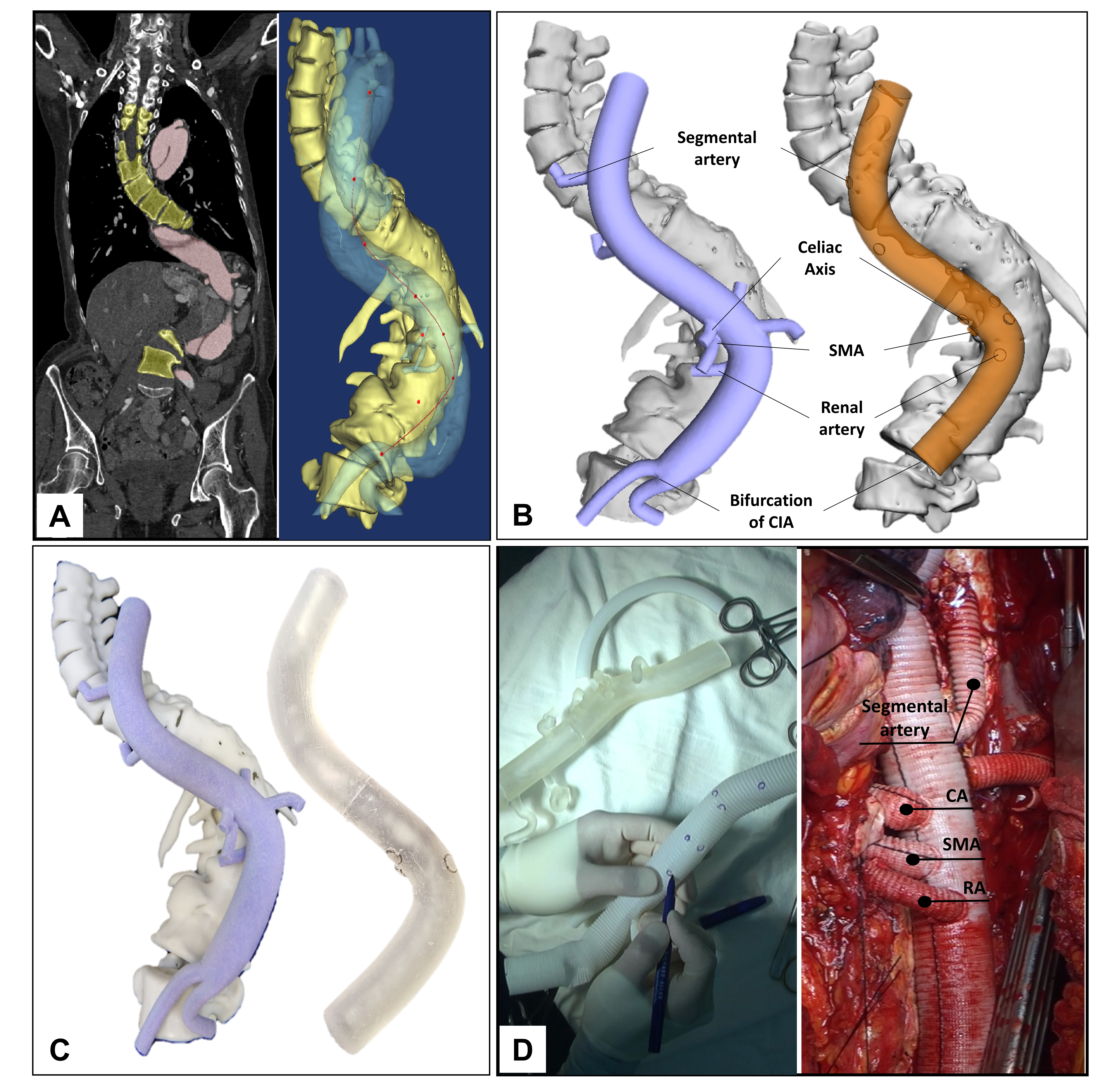초록접수 현황
| 20F-013 | 구연 발표 |
Pre-sewn Multi-branched Aortic Graft and 3D-Printing Guidance for Crawford Extent II or III Thoracoabdominal Aortic Aneurysm Repair
Younju Rhee, Sung Jun Park, Joon Bum Kim
Department of Thoracic and Cardiovascular Surgery, Asan Medical Center, University of Ulsan College of Medicine, Seoul, Republic of Korea
Purpose : Reconstruction of the visceral and segmental arteries is a challenging part of open surgical repair of extensive thoracoabdominal aortic aneurysm (TAAA). For more efficient reconstruction of these branching vessels, a technique of using pre-hand-sewn multi-branched aortic graft (octopod technique) has been adopted with the aid of 3D-printing guidance in latest cases.
Methods : The octopod graft has been employed for the extent II or III TAAA repair, in which the commercially available two 4-branched aortic grafts were interconnected before surgery. Since January 2017, 3D-printed aortic model has been used to efficiently replicate the projected aorta shape fitted to patient’s anatomy.
Results : From May 2015 through Oct 2019, 20 patients (median age, 40years; range, 23-65; 5 females) underwent extent II or III TAAA repair using the octopod technique with (n=9) or without (n=11) 3D-printing guidance. Thirteen patients (65%) were diagnosed as Marfan syndrome. Eighteen patients (90%) had undergone prior aorta repair including 4 patients (20%) undergoing redo-thoracotomy. Revascularization of intercostal arteries was conducted in 19 patients (95%, median, N=2; range, 1-4). Median pump and entire procedural times were 173.5 minutes (interquartile range [IQR], 136.8-187.8 min) and 441 minutes (IQR, 392.8-492.3), respectively. There was no operative mortality or stroke, however, permanent paraplegia occurred in one patient (5%). During follow-up (median 35 months, range 1-56 months), all of reconstructed branched vessels remained wide patent on CT.
Conclusion : The octopod technique for open TAAA repair showed favorable early and mid-term results with high procedural efficiency. 3D-printing guidance is expected to improve surgical flows especially in challenging anatomy.
Methods : The octopod graft has been employed for the extent II or III TAAA repair, in which the commercially available two 4-branched aortic grafts were interconnected before surgery. Since January 2017, 3D-printed aortic model has been used to efficiently replicate the projected aorta shape fitted to patient’s anatomy.
Results : From May 2015 through Oct 2019, 20 patients (median age, 40years; range, 23-65; 5 females) underwent extent II or III TAAA repair using the octopod technique with (n=9) or without (n=11) 3D-printing guidance. Thirteen patients (65%) were diagnosed as Marfan syndrome. Eighteen patients (90%) had undergone prior aorta repair including 4 patients (20%) undergoing redo-thoracotomy. Revascularization of intercostal arteries was conducted in 19 patients (95%, median, N=2; range, 1-4). Median pump and entire procedural times were 173.5 minutes (interquartile range [IQR], 136.8-187.8 min) and 441 minutes (IQR, 392.8-492.3), respectively. There was no operative mortality or stroke, however, permanent paraplegia occurred in one patient (5%). During follow-up (median 35 months, range 1-56 months), all of reconstructed branched vessels remained wide patent on CT.
Conclusion : The octopod technique for open TAAA repair showed favorable early and mid-term results with high procedural efficiency. 3D-printing guidance is expected to improve surgical flows especially in challenging anatomy.

책임저자: Joon Bum Kim
Department of Thoracic and Cardiovascular Surgery, Asan Medical Center, University of Ulsan College of Medicine, Seoul, Republic of Korea
발표자: Younju Rhee, E-mail : rheeyounju@gmail.com


